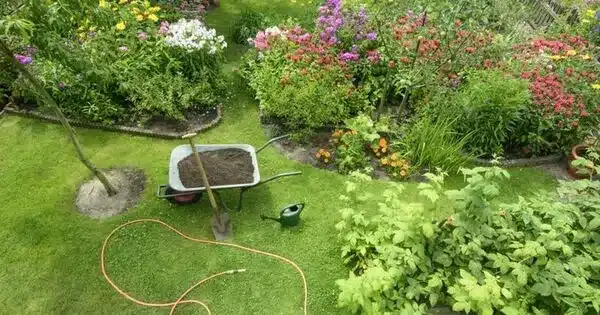Gardening is good for the environment. gardening, also called as sustainable or eco-friendly gardening, is a method of gardening that tries to reduce its environmental impact and help with climate change mitigation. It is a type of gardening that can help minimize global warming by reducing greenhouse gas emissions from gardens and encouraging carbon dioxide absorption by soils and plants. This gardening style emphasizes activities that preserve resources, reduce waste, and promote biodiversity.
Being a climate-friendly gardener entails taking into account both what happens in the garden and the materials used in it, as well as the impact they have on land use and climate. It may also incorporate garden elements or activities that aid in the reduction of greenhouse gas emissions elsewhere.
Here are some tips for climate-friendly gardening:
- Native Plants: Plant native species in your garden since they thrive in the local climate and require less water and care. Native flora also provide food and habitat for wildlife in the area.
- Water Conservation: To reduce water waste, use water-efficient irrigation technologies such as drip irrigation or soaker hoses. Collect rainwater and use it to irrigate your garden in barrels.
- Soil Health: Compost and organic matter will help to improve your soil. Healthy soil holds more water and eliminates the need for synthetic fertilizers.
- Organic Gardening: Synthetic pesticides and herbicides should be avoided since they can kill beneficial insects and taint water sources. To keep pests at bay, use natural pest management measures including companion planting.
- Mulching: Apply mulch to your garden beds to retain moisture, suppress weeds, and regulate soil temperature. This reduces the need for constant watering and weeding.
- Reduce Lawn Size: Lawns require a lot of water and maintenance. Consider reducing the size of your lawn and replacing it with low-maintenance, drought-tolerant groundcovers, or other plants.
- Composting: Composting kitchen scraps and garden waste reduces the amount of organic matter sent to landfills and provides nutrient-rich soil conditioner for your garden.
When constructing structures such as raised beds, use materials that are responsibly sourced or recycled. Toxins can leak into the soil from chemically treated wood. To limit soil disturbance, improve water retention, and store carbon in the soil, consider no-till or low-till gardening practices. To attract beneficial wildlife to your garden, build birdhouses, bat boxes, and other structures. These animals can aid in the natural control of pests.
You can lower your environmental impact, conserve resources, and create a beautiful, sustainable garden that benefits both you and the earth by implementing these climate-friendly gardening methods.
















